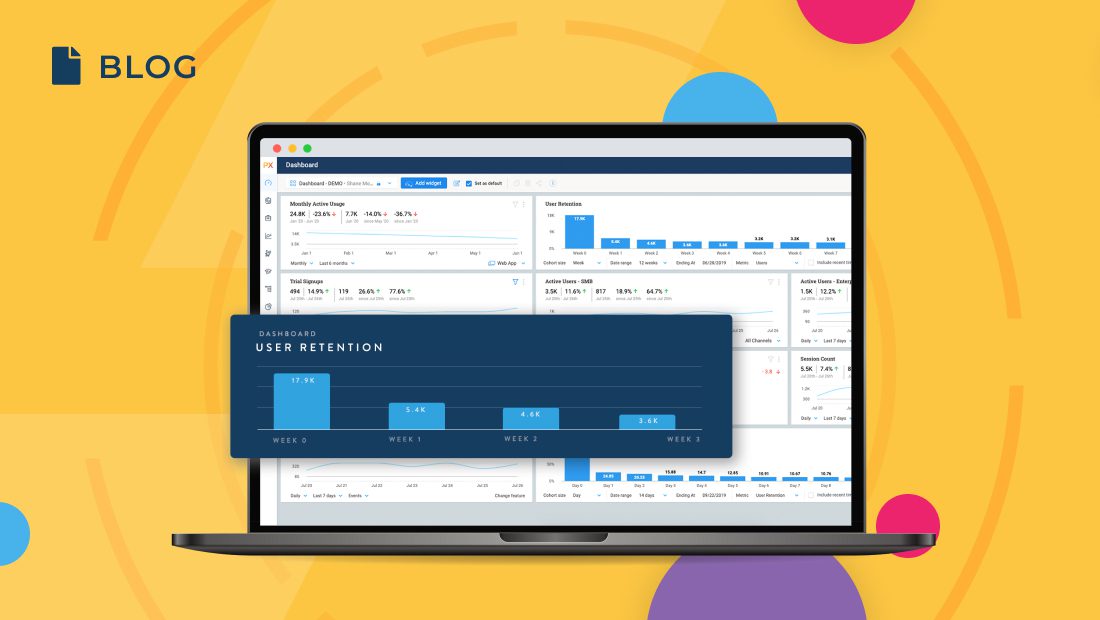Most product leaders know how critical digital transformation is to their company’s future. But the best ways to nail down your digital transformation strategy aren’t always so clear. Fortunately, there is a compass that you can use to direct your plans: analytics.
Analytics lay the foundation for your digital transformation strategy and provide solid footing to launch your plan. Wondering how? In this article, we look at digital business transformation and explain how to use analytics to craft a winning digital transformation strategy.
A SaaS digital business transformation is underway.
The SaaS industry is in the midst of a massive push toward digital business transformation. According to Statista, companies will spend more than $1.78 trillion on digital transformation in 2022.
Still, despite being popular, there are a few misconceptions about digital transformation.
Digital transformation doesn’t just mean picking up technology here and there to fill in the gaps. It’s also not confined to moving to a social media platform or transitioning to the cloud. More accurately, digital transformation is injecting technology into every aspect of the company. That means shifting the entire company to a digital model that’s flexible, constantly improving, and product-focused.
Why is digital transformation critical to modern SaaS teams?
For SaaS companies, relying on technology can seem like a natural process. After all, your product is what your company is all about. However, in order to successfully complete a digital transformation, you need to immerse the entirety of your company in technology. That means relying on product-led growth, a tactic that uses your product to drive everything from acquisition to adoption and expansion.
Why are digital transformation and product-led growth so important? For one, they focus on the product experience. Today’s SaaS world is saturated and ultracompetitive. User experience is essential to growth. In fact, according to Gartner, more than two-thirds of companies are now competing primarily on customer experience. Product-led growth roots your digital transformation in the user’s experience and keeps your moves grounded in your customers’ needs.
Second, the SaaS market has adopted models that depend on outstanding user experiences. There was a time when SaaS success hinged on selling units and one-off pieces of software. However, with subscription, freemium, and trial-based strategies now the norm, SaaS companies rely heavily on recurring revenue. Product-led growth strategies are designed to help SaaS companies thrive in that customer-centric environment.
How do analytics support your digital transformation strategy?
Analytics are essential to your digital transformation strategy. Here are a few reasons why:
They unite your teams.
When you have clear product metrics and goals in front of you, it can push your entire company in the same direction. Rather than operating in silos, cross-departmental teams come together when they’re working to boost the same numbers and are all marching toward a better product experience.
They root your plan in customer experience.
In-product analytics provide a window into the user’s experience. By focusing on improving the product experience, you show the user you care, drive long-term retention, and rally your digital transformation strategy around product-centered growth.
They accelerate growth.
When you rely on in-product analytics, it allows you to grow from the inside out by focusing on product qualified leads and current users. That strategy lowers your acquisition costs and zooms in on net dollar retention—a recipe for faster growth.
Use PX to craft an unbeatable digital transformation roadmap.
When used right, in-product analytics and Gainsight PX can light the way to a winning digital transformation roadmap. Here are a few tips for success:
Make feedback a centerpiece.
If you want to craft a digital transformation roadmap that launches your company into the future, anchor it in feedback. One of the best ways to access a successful digital transformation is to embed customer feedback loops into your product. This means using feedback to identify spots for improvement, dropping in engagements and feedback opportunities at strategic points in your product, and using post-launch feedback to measure how your decisions are panning out.
Support decisions with metrics.
As you start enacting your digital transformation strategy, examine key product data points that affect your most urgent goals. For instance, if you’re working to improve engagement, you’ll want to monitor user behaviors, such as how often and long users interact with features. By tracking results through analytics, you can see what’s working and where you need to improve.
Educate users and encourage action.
Successful digital transformation requires constant change, testing, and upgrades. Once you start looking at in-product analytics, you’ll see what actions you need to take to help users accomplish their objectives. In many cases, the best way to keep users moving forward is by tracking their path through the product, spotting friction points, and using in-app engagements or guides to help eliminate that friction.
See Gainsight PX in action.
Driving a successful digital transformation strategy takes in-depth analytics. And Gainsight PX was designed to help product leaders and managers dig into their product’s most important insights. With Gainsight PX, you can tap into your product’s analytics and access easy-to-read reports in a single platform.
Want to see how Gainsight PX can power your organization’s digital transformation plans? Take a self-guided tour and explore how Gainsight PX helps reduce churn, accelerates time to value and drives user adoption.

